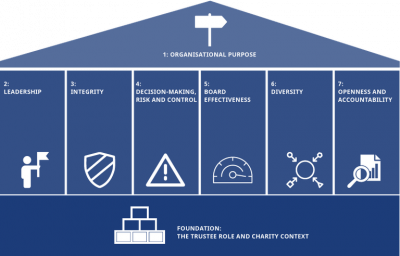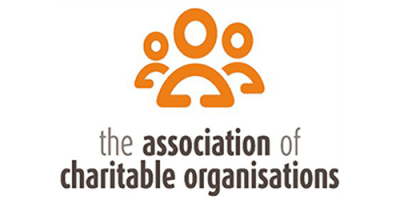ACO Coronavirus Delivering Support

Today ACO has published a new guide to giving financial support to individuals during the COVID-19 crisis 'Coronavirus: delivering financial support.'
The guide helps organisations looking to set up new funds to provide financial grants to individuals adversely impacted by the COVID-19 outbreak by outlining the key considerations and minimum requirements for establishing grant-making operations to support individuals.
Donal Watkin, Chief Executive of ACO, commented: “As a result of the COVID-19 outbreak, we have seen an increase in organisations wishing to set up new funds to help individuals requiring urgent financial support.
“While it is encouraging to see new funds being established, it is important they are managed effectively to operate efficiently and best meet the needs of individuals. As the UK’s umbrella body for benevolent funds, we have used our insight into working with benevolent charities during the current crisis to develop this guide to help new funds establish their grant-making operations.”
The full guide can be viewed below or downloaded HERE
Plan for recovery now.

You are invited to a virtual meeting of minds to share ideas and ask for advice on how to plan for your charity's recovery post lockdown.
This meeting is intended for Trustees and CEOs of small to medium-sized charities who would like to;
- sense check their ideas around charity recovery
- hear from other people in the same position
- be challenged and
- supported
Book your FREE place
Code of Conduct for a virtual meeting

As we move to hold more meetings, it is helpful to have some guidelines for attending and chairing virtual meetings to ensure that these are productive and that everyone feels that they are able to participate and input into the items for discussion so that clear communication and outcomes will be achieved. The same levels of courtesy should be extended to people attending virtual meetings as a face to face meetings and everyone should feel that they are able to contribute to the meeting.
The following advice has been gathered from talking to a number of people and experience.
Meeting participants
- Acknowledge the invitation to the meeting
- Check before time that the software is working on whichever device you are going to use
- Join the meeting on time
- Check your screen name – remember everyone else will see this!
- Face the window/light – don’t have it side on/behind you or you will be in shadow
- Try not to fidget or move around – your camera will adjust to the light and if you constantly move it will need time to adjust
- Remember that everyone else can see you so be conscious of facial expressions
- Join with your sound on mute - only unmute if you need to speak. The noise of everyone typing or rustling paper really magnifies and can be distracting for others and some platforms will focus on the sound and expand your screen.
- Keep the chatbox up if this is a feature of the software - it's a great way to interact with other participants
- Look at the camera not the screen if you are speaking- it makes it a more personal experience for all attendees
Chair
- Ensure you circulate the invite to attend the meeting well in advance of the meeting and if possible circulate the agenda and any paperwork in enough time for people to read and form responses and/or questions so that they are able to contribute constructively and without the need to read during the meeting.
- If minutes are required, be clear about who will be the minute taker and check with them throughout the meeting that they have captured the actions. Minutes from virtual meetings do not need to capture the “chat”, just the salient points and the actions and deadlines. Ensure the minute taker is able to “attend” the meeting and if taking minutes/notes electronically that they have access to another device to do this.
- Arrive a few minutes ahead of the meeting so that the virtual room is not empty
- Set out how people can signify that they wish to speak if this is not a built-in feature of the platform being used for the meeting.
- Check that all attendees have been given the opportunity to contribute.
- Thank everyone for attending before signing off.
Successful remote team working.

Working remotely was once seen as a “perk” however, with the current crisis we are finding it a necessity.
Although there are benefits to remote working being thrown into has some additional challenges. For those managing and caring for a team the question of how to keep them engaged and aligned with your charitable efforts is forefront.
Here are four tips to engage more effectively with your remote team:
1) HAVE A CLEAR COMMUNICATIONS STRATEGY. Nothing ruins your ability to generate effective team engagement more than a poor communications strategy. This applies even more to remote team members. Having a clear message, sent to the right people, that allows for feedback to be given is the best way to stimulate engagement and hear newly generated ideas or initiatives, and ensure people feel cared for.
2) HAVE SET GOALS. Working remotely relies on a high level of trust and having set goals helps build that trust and give the team a collective sense of achievement. Working from home often means that you don’t work the traditional office routine, so setting realistic goals and deliverables with deadlines will go a long way to helping team members be more productive and focused. It also helps individuals to get their job done whilst giving them the freedom to achieve their deliverables in their own way.
3) ASK QUESTIONS AND SEEK FEEDBACK. If you want to build engagement with your remote teams, you need to ask questions and seek feedback from them. It can be as simple as sharing content that generates a discussion or creating a quick anonymous survey to find out how the remote tema feel about something. I like using Slack to have informal conversations and share vital information.
4) HAVE PATIENCE. For many of us remote working is new, so we need to have patience with setting up our communications and how we handle working remotely. I am sure you have already discovered that your Skype or Zoom calls can drop out due to a poor internet connection. Unexpected interruptions will happen, my dog loves bombing the conference calls. Be understanding that this method of working is vastly different from the rigid ways of working we’re all accustomed to.
Have some patience, give some flexibility, and you’ll see quickly that your remote team will be more productive, more engaged, and contribute more during this trying time. You may even want to carry on with some level of remote working once the crisis is over.
Don’t get overwhelmed by the current crisis have a management strategy

12 Steps to support and lead your charity
The Coronavirus pandemic is a crisis for us all, not least small charities. The challenge is how do you keep your charity on track when it feels like all of the focus is on the virus.
Having a crisis management strategy that is simple and effective will reassure everyone that action is being taken in the right way at the right time.
The following 12 step plan will focus on addressing the crisis and the leadership needed to do it.
1. Create a Solutions Team
2. Facts rather than conjecture
3. Give the solution team focus by relieving them of other responsibilities.
4. Resolve ASAP
5. Be Poised and Positive
6. Over-communicate
7. As the leader take ownership and
8. Be Present
10. Once the solution team have identified solutions get behind them
11. Make sure you stay focused on the real Crisis
12. Refresh Your Goals
If you would like help developing your plan I am here to help.
How you can use remote working tools to improve your productivity wherever you are.

This great blog by Ed Gould of CarswellGould is timely and very helpful for all of us faced with teams remote working during the Covid-19 outbreak.
Good client-agency relationships benefit from a mutual value of efficiency, clarity and communication. At our marketing communications agency, we work with people from all over the world and partner a multitude of people to deliver our projects. Add in sustainability and an aim to reduce travel, and you'll understand why we love using tools that allow us to collaborate well with people, wherever they are.
Many people are now facing the stark reality of working from home, on their own. In these 'unique times,' will all would do well to stay connected, present and engaged. So, we invite you to explore and a few ways that we like to communicate and connect.
Happy home-working.
1. Communication is key, so try Zoom
Zoom is a web-based video conferencing tool with a local, desktop client and a mobile app that allows users to meet online, with or without video. You can call, host meetings, chat and work with your teams and clients from anywhere.
It's a got some great additional features, like this green screen, virtual background. You can pop a picture of the office in the background and continue to give off that 'business as the usual' highly professional vibe (even now schools out).
2. Make work easily accessible via a collaborative workspace like Google Drive
We use Google Drive and its related suite of products for 80% of our work as it lets us create, share, collaborate on our work. You can share comments, suggestions, live amends in each of its programmes, improving efficiency. Its suite of products is online Google versions of applications such as Word, Excel and Powerpoint with different names (Docs, Sheets, and Slides) but the same functions. As they are live online versions, we can give clients access to their work via its sharing feature.
Alternatives are available such as Microsoft Office 365.
3. Design collaboration beyond just the designer with Creative Cloud
Creative Cloud is a collection of 20+ desktop and mobile apps and services for photography, design, video, web, UX and more. Now you can take your ideas to new places with Photoshop on the iPad, draw and paint with Fresco, and design for 3D and AR. Join our global creative community — and make something better together. Our designers, creatives and makers use this as the core base to build work - we also use its collaboration tools to share style sheets, brand assets, logos and templates via this all in one package. It means we can tie in with client brand and design teams and their creative assets effortlessly.
4. GitHub to help our developers share and collaborate
GitHub is a Git repository hosting service. While Git is a command-line tool, GitHub provides a web-based graphical interface. It also provides access control and several collaboration features, such as wikis and essential task management tools for every project. Our developers use it to work together on, share code and collaborate on projects. It brings together our developers from across the world and helps them in the mission to build great software.
5. Trello to you too!
Who doesn't love a list? Trello lets you work more collaboratively and get more done. It's the most straightforward, slickest and quickest tool to plan, organise work and assign jobs to team members.
6. Monday.com, good for project management any day of the week
This one's fast proving itself as a great tool to manage our outsourced marketing programmes and advisory services in collaboration with our clients. It's a tremendous full-stack project management tool which allows us all to collaborate on project current workflow, tasks and teams.
7. WhatsApp natters keep things real
We've all got a load of groups on the go right? Most of the time it's gibberish and nonsense with friends about events, the weather or what's happening in the world. Well, it's an excellent tool for your teams - we love connecting with this super simple tool. Whether we're on location, working overseas, at client events, sharing images to be posted on social media, or just messaging the tea order in - it's perfect. Best of all we share gibberish and nonsense on our workgroup too - which is nice.
If you want help connecting with your teams, customers, clients or stakeholders just let us know. We can help with internal communications, inbound marketing, creative comms and can ensure you find the right ways to be heard and valued, now and in the future.
Challenges and recommendations on charity governance.

Challenges to improving governance
1. Articulating a clear purpose and vision for the charity to focus and direct decision making.
2. Clear responsibility and ownership for critical matters within the Trustee Board.
3. The need for Charity Trustee Board members to have appropriate diversity of skills, thought and experience to provide effective leadership
4. Training of Charity Trustee Board members on matters tailored to their charity's business model.
5. Sufficient attention paid to issues that are material to performance, impact, legality or charitable objectives.
6. Lack of Charity Trustee board-level awareness
of and involvement in stakeholder engagement.
7. Ensuring governance systems, performance and impact align with the charity’s overall strategy
Recommendations for improving governance
1. Ensure that the charity’s purpose is clearly established and aligned with activities and that opportunities are assessed against it.
2. Develop a strategy and assess risks and opportunities in light of environmental, social and governance ( ESG ) concerns.
3. Equip the Charity Trustee board with capacity-building opportunities such as expert presentations on sector-specific insights, engagement with management and training on key issues.
4. Establish a Charity Trustee performance review process which is supported by clear KPIs and outcomes.
5. Create a dialogue and partnership with stakeholders to encourage their input and challenge the Charity Trustee board in developing policy.
6. Undertake an independent review of the Charity Trustee board every couple of years. Benchmark against other charities and previous years to track improvement.
Building effective Trustee Boards

If you are a charity trustee or have been one I am sure you are as interested as I am in what makes an effective board.
Every charity is different, every trustee is different and effective boards will look different in every organisation.
Good governance comes from getting the balance between extremes, good training and support help to maintain that balance.
Please share your experience with this short survey. https://lnkd.in/dRZqNTK
UK benevolent funds hand out £216m as hardship grows.

As Chair of Trustees for both The Association of Charitable Organisation and the Smallwood Trust I was delighted to see the following article in The Guardian at the weekend.
Return of pre-welfare state charities created to help struggling ‘gentlefolk’ as people fall through safety net.
Benevolent funds – many created on a wave of 19th-century philanthropy to provide assistance to struggling “gentlefolk” or handouts to the starving and destitute of the parish – are reporting a surge in demand for help and hardship grants.
Over the last year, hardship charities in the UK gave out an estimated £216m in grants – up from £203m in 2016 – covering anything from cash handouts to food and clothes, fridges, beds, wheelchairs, psychological counselling, carer help and debt advice.
Over half a million people came to them for help in 2018-19. “These figures show the increasing levels of support needed by people with nowhere else to turn,” said Donal Watkin, chief executive of the Association of Charitable Organisations, which represents more than 120 benevolent charities.
The rise in demand, say the charities, is driven by collapsing living standards and static wages, and the pressures of precarious and stressful working lives, against a backdrop of cuts to the NHS, care services and welfare benefits.
The funds were set up originally by occupational groups – sailors, vicars, accountants, actors and musicians, engineers, for example – or by parishes in the years before state pensions and social security to provide charitable assistance to members or local residents who faced destitution.
Although they fell into decline after the creation of the welfare state, many funds have now rebranded and modernised in response to new demand: the Society for the Assistance of Ladies in Reduced Circumstances, for example, has become the Smallwood Trust; the Distressed Gentlefolks’ Aid Association has become Turn2Us.
Surviving on endowments and in some cases topped up by donations and fundraising, the benevolent funds are tiny compared with the mighty billions of the welfare state, but they act as a tracker both of wider societal trends and the receding frontiers of state-provided social security.
In recent years they have experienced a switch in demand from end-of-life assistance to help for younger working-age beneficiaries, often in decent jobs but with few savings who find that a single adverse event – illness, unemployment – can trigger a spiralling crisis, one compounded if the state safety net is inadequate.
Kris Barnett, chief executive of the Institution of Civil Engineers Benevolent Fund, said: “When I started here [in 2003], most of the applications were from widows and older people. Now 70% of our beneficiaries are people of working age who are struggling with modern life.”
Last year the fund gave a 176% increase in grants – financial assistance or courses of therapy – to beneficiaries affected by mental illness, reflecting the more stressful working lives of its members in the construction industry, as well as increasingly slow or inadequate NHS provision.
The Charity for Civil Servants stepped in on several occasions where current and former civil servants with chronic disease or disability had been denied home adaptation grants by local councils, coming to the rescue with grants of more than £10,000.
“If the local authority says a person isn’t eligible for help, and a grant from us is the only way that person can have a normal quality of life, why wouldn’t we do it?” said Flavia Gapper, director of help and advice at the Charity for Civil Servants.
Glasspool Charity Trust, a general poverty fund that spent nearly £1.7m last year on grants for basic household appliances such as washing machines, cookers and beds, says homelessness, domestic violence, mental illness, in-work poverty and debt caused by long waits for universal credit are among the key drivers of demand.
Demand surged after the coalition scrapped the social fund in 2013 in favour of local welfare provision, which subsequently collapsed in many parts of England. In these “welfare deserts” cash-strapped councils rely increasingly on charities such as Glasspool, as well as food banks and faith groups, to help poor people in crisis.
Glasspool’s chief executive, Julie Green, warned that it would not be able to provide unlimited help for the increasing numbers of people who could no longer rely on the state for help: “We don’t want to replicate state funding, but the goalposts of what constitutes state funding have moved.”
Damon Gibbons, director of the Centre for Responsible Credit, said rising demand for general hardship funds reflected the growth of destitution and extreme poverty. “These charities have always existed to cover for the holes in the safety net but the holes have got bigger and they are struggling to fill the gap.”
Emily Beardall, 44, had just qualified with a degree in pharmacy when she was diagnosed with myalgic encephalomyelitis (ME). “I couldn’t work. It was difficult financial and emotionally.”
She faced a long wait for NHS specialist treatment and found it harder and harder to make ends meet. She skimped on food, and cut back on basics. It was difficult to access disability benefits. “When you are ill you don’t have the energy to fight for things.”
After two years she found out about Pharmacist Support, a charity set up to provide help for current and former pharmacists and their families in their hour of need. “I was lucky,” says Beardall, “they scooped me up.”
The charity gave her a cash grant to tide her over while it arranged for an adviser to sort out her benefits – she was initially refused disability benefits, although at the time she “could barely feed herself” – and for help towards the cost of a mobility scooter.
She is now coming off unemployment benefit and taking a return-to-work course, an upturn in her life for which she credits Pharmacist Support. “It felt like I had been picked up and carried out of a horrible situation. I was reminded people do care.”
Charity2020 meeting - 17th March - BOOK NOW

Charity 2020 brings together senior people in the charitable sector to meet leading figures from this and other sectors to gain the benefit of their views on major topics of current interest.
The next meeting is on Tuesday 17th March and our speaker Anne-Marie Piper, Senior Charity Partner at Farrers, will be sharing her insights.
Meetings are held up to three times a year, at lunchtime between 12.00 noon and 2.00 p.m. The occasion provides the opportunity to mix informally over a buffet lunch before a talk by the guest speaker followed by a lively question and answer session.
Where are the meetings held?
We meet by kind permission of Farrer’s in their historic 66 Lincoln’s Inn Fields building.
What are the costs?
Charity 2020 is a non-profit-making body and at present we make no charge for the luncheon meetings. There is no subscription.
Places are limited and are on a first-come-first-served basis.

